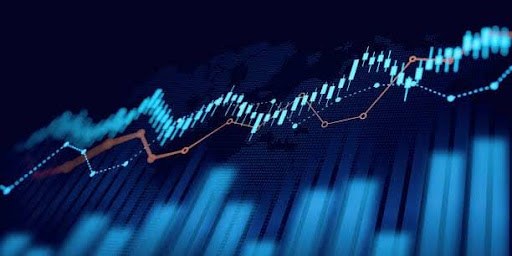The power of influence is undeniable. The rise of social media and the internet has given birth to a new breed of financial influencers who have the ability to sway the markets with their predictions and opinions. This phenomenon is particularly evident in the realm of leveraged cryptocurrency exchanges, where the impact of these influencers is felt in every trade. Let’s delve into the fascinating dynamics of how these influencers shape the landscape of cryptocurrency futures exchanges and the price predictions for Bitcoin.
The world of cryptocurrency trading is a fast-paced, high-stakes environment where every tweet, post, or video can have a ripple effect on the market. Leveraged cryptocurrency exchanges, platforms that allow traders to amplify their bets with borrowed funds, are particularly susceptible to the influence of these financial gurus. These exchanges operate on the principle of margin trading, where traders can control a larger position than their account balance by borrowing funds from the exchange. This amplified trading can lead to significant profits, but it also comes with the risk of substantial losses. The opinions of influencers can sway traders to take on these risks, impacting the overall market dynamics.
Cryptocurrency futures exchanges, on the other hand, offer a different kind of trading experience. These platforms allow traders to speculate on the future price of cryptocurrencies, such as Bitcoin, by entering into contracts that obligate them to buy or sell an asset at a predetermined price on a future date. The influence of influencers on these exchanges is just as pronounced, as their predictions can create a sense of urgency or caution among traders, affecting the demand for these contracts and, consequently, the price of Bitcoin.
Now, let’s talk about BTC Price Prediction. It’s a hot topic among cryptocurrency enthusiasts and traders. Influencers, with their vast followings and market insights, often share their predictions on where they believe the price of Bitcoin is headed. These predictions can be based on technical analysis, market sentiment, or even global economic factors. When an influential figure makes a BTC price prediction, it can create a wave of buying or selling pressure, as traders rush to capitalize on the expected price movement. This can lead to significant price swings in the short term, as the market reacts to the influencer’s forecast.
The role of influencers in the cryptocurrency space is multifaceted. They not only provide price predictions but also offer insights into market trends, trading strategies, and risk management. Their expertise and experience can be invaluable to traders, especially those who are new to the world of leveraged exchanges and cryptocurrency futures. By following the advice of these influencers, traders can potentially improve their trading decisions and increase their chances of success. However, it’s crucial to remember that no influencer can predict the market with absolute certainty, and traders should always conduct their own research and consider their risk tolerance before making any trades.
In the world of leveraged cryptocurrency exchanges, the influence of financial influencers is palpable. Their every move, whether it’s a tweet about a new trading strategy or a live stream discussing market trends, can have a direct impact on the trading decisions of their followers. This influence can lead to a herd mentality among traders, where they follow the lead of their favorite influencers without fully understanding the risks involved. It’s essential for traders to maintain a critical mindset and not blindly follow the advice of influencers, as the market can be unpredictable and volatile.
Cryptocurrency futures exchanges are also significantly impacted by the influence of financial gurus. These platforms are designed to provide traders with the tools to speculate on the future price of cryptocurrencies, and influencers play a crucial role in shaping the expectations of these traders. By sharing their insights and predictions, influencers can create a narrative around the future price of Bitcoin, which can influence the demand for futures contracts and, in turn, the price of Bitcoin. This narrative can be powerful, as it can drive the market in a particular direction, whether it’s upwards or downwards.
The power of influencers in shaping the narrative around BTC price prediction is undeniable. Their followers trust their expertise and are more likely to act on their predictions. This trust can lead to significant market movements, as a large number of traders act in unison, buying or selling Bitcoin based on the influencer’s forecast. This can create a self-fulfilling prophecy, where the market moves in the direction predicted by the influencer, not because of any underlying market fundamentals, but because of the collective action of their followers.
It’s also worth noting that the influence of financial influencers extends beyond just price predictions. They can also impact the perception of leveraged cryptocurrency exchanges and cryptocurrency futures exchanges among their followers. By sharing their experiences and opinions on these platforms, influencers can sway the sentiment of their followers towards or against these exchanges. This can affect the trading volume and liquidity of these platforms, as well as the overall perception of their reliability and trustworthiness.
In conclusion, the impact of influencers on leveraged cryptocurrency exchanges and cryptocurrency futures exchanges is significant and multifaceted. Their predictions, insights, and opinions can shape the market narrative, influence trading decisions, and affect the perception of these platforms among their followers. While their expertise can be valuable, it’s crucial for traders to maintain a critical mindset and conduct their own research before making any trading decisions. The world of cryptocurrency trading is complex and ever-changing, and the influence of financial influencers is just one piece of the puzzle that traders must navigate to succeed in this exciting and volatile market.

